Guided wolf hunts offer a structured approach to hunting, emphasizing ethical practices and safety. Experienced guides provide expertise, ensuring compliance with regulations and promoting responsible wildlife management.
1.1. Overview of Wolf Hunting
Wolf hunting is a centuries-old practice, often conducted for population control, conservation, and recreational purposes. It involves tracking and harvesting wolves, typically in remote, vast terrains. Hunters employ various methods, including stalking, baiting, and using caller devices to mimic wolf howls. The practice is regulated by wildlife agencies to maintain ecological balance. International consensus principles emphasize ethical and sustainable approaches to ensure wolf populations remain healthy while addressing human-wildlife conflicts. This activity requires skill, patience, and adherence to legal frameworks, making it a challenging yet rewarding endeavor for experienced hunters.
1.2. Importance of Guided Hunts
Guided wolf hunts provide hunters with expert knowledge, ensuring safe and ethical practices. Guides offer insights into wolf behavior, habitat, and tracking techniques, enhancing success rates. They also ensure compliance with legal requirements and permits, minimizing environmental impact. Additionally, guided tours promote responsible wildlife management and conservation efforts. By educating participants on ethical hunting practices, guides foster a deeper appreciation for nature and wildlife. This structured approach ensures a balanced and sustainable hunting experience, benefiting both hunters and ecosystems.
1.3; Historical Significance of Wolf Hunts
Wolf hunting holds deep historical roots, with indigenous tribes revering wolves as symbols of resilience and family bonds. Early hunts were integral to survival, providing food and fur. In folklore, wolves often represented both adversaries and revered beings, shaping cultural narratives. Historically, wolf populations faced threats from overhunting and habitat loss, leading to conservation efforts. Guided hunts today honor this legacy while promoting sustainable practices, ensuring wolves thrive as key ecosystem components. This blend of tradition and modern ethics underscores the importance of responsible hunting practices.
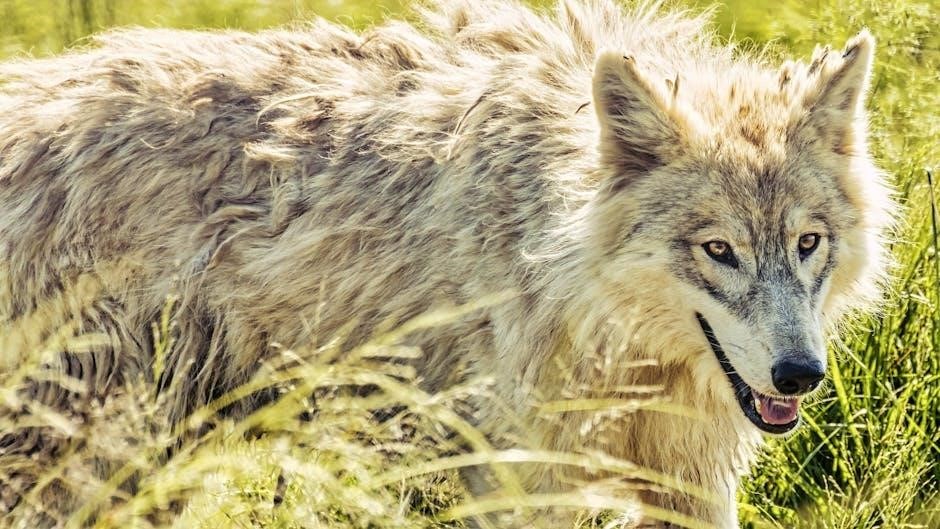
Wolf Biology and Behavior
Wolves are highly social animals, thriving in structured packs with defined hierarchies. Their intelligence and adaptability make them challenging prey, necessitating deep understanding for successful hunts.
2.1. Wolf Habitat and Distribution
Wolves are highly adaptable, inhabiting diverse habitats from Arctic tundras to forests and grasslands. Historically widespread across the Northern Hemisphere, their range has diminished due to human activity. Today, wolves thrive in remote, undisturbed areas with abundant prey. Understanding their habitat preferences and distribution patterns is crucial for guided hunts, allowing hunters to locate wolf populations effectively. This knowledge ensures sustainable hunting practices, respecting both the environment and wildlife.
2.2. Wolf Behavior and Social Structure
Wolves are highly social creatures, living in hierarchical packs led by an alpha pair. Their behavior is driven by survival instincts, cooperation, and territorial defense. Understanding their social structure is key for hunters, as it influences their movements and hunting patterns. Wolves communicate through howls, body language, and scent marking, maintaining pack cohesion. This complex behavior highlights their intelligence and adaptability, making them both challenging and rewarding prey in guided hunts. Respecting their social dynamics ensures ethical and responsible hunting practices.
2.3. Wolf Communication and Tracking
Wolves communicate primarily through howls, body language, and scent marking, which are vital for maintaining pack cohesion and territory. Tracking wolves involves identifying their tracks, scat, and urine marks, which guides use to predict their movements. Understanding these communication methods and signs is essential for hunters to locate and follow wolf packs effectively. Experienced guides often interpret these signals, enhancing the success of guided hunts while ensuring ethical practices align with wildlife conservation goals.
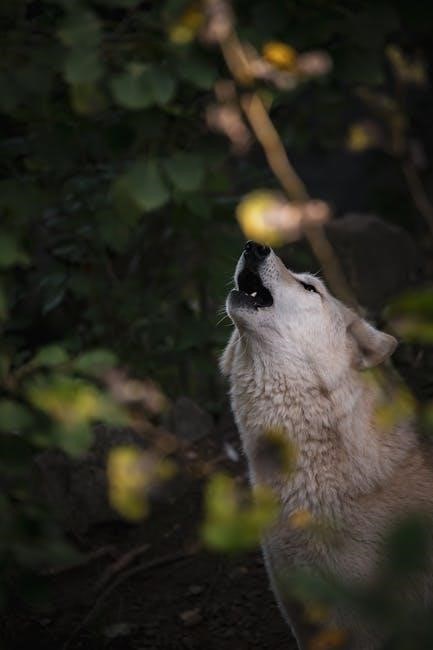
Legal and Ethical Considerations
Guided wolf hunts must adhere to strict regulations and permits, ensuring sustainability and ethical practices. Hunters are expected to follow local laws and conservation guidelines.
3.1. Regulations and Permits for Wolf Hunts
Wolf hunting is heavily regulated, requiring specific permits and licenses. Hunters must comply with state or provincial wildlife agency rules, ensuring sustainable practices. Permits often limit harvest numbers, while baiting regulations vary by region. For example, some areas require signs at bait sites. Guides play a crucial role in ensuring adherence to these rules. International principles also influence local policies, emphasizing ethical and conservation-focused hunting practices. Proper documentation and reporting are essential to maintain legal and ethical standards.
3.2. Ethical Guidelines for Hunting Wolves
Ethical wolf hunting emphasizes respect for the animal and ecosystem. Hunters must prioritize humane practices, ensuring quick and clean kills to minimize suffering. International principles guide decision-making, balancing conservation with hunting; It’s crucial to avoid unnecessary harm to non-target species and habitats. Ethical hunters also adhere to local laws and promote sustainable wolf populations. Understanding the wolf’s role in ecosystems fosters a deeper respect for these apex predators. Ethical guidelines ensure hunting aligns with conservation goals and cultural values, preserving the integrity of both the hunt and the environment.
3.3. International Consensus Principles for Wildlife Control
International consensus principles emphasize humane and sustainable wildlife control methods. These guidelines ensure that hunting practices align with ecological balance and ethical standards. Key principles include minimizing animal suffering, using non-lethal methods when possible, and prioritizing ecosystem health. Decisions are based on scientific evidence and stakeholder input. These principles also encourage public education and transparency in wildlife management. By adhering to these guidelines, guided wolf hunts contribute to both conservation efforts and the ethical treatment of wildlife, fostering a harmonious relationship between humans and nature. This approach supports long-term biodiversity and ecosystem stability.
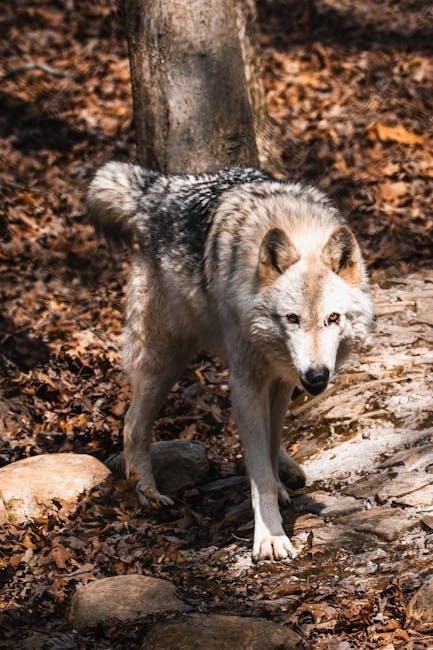
Gear and Equipment for Wolf Hunts
Proper gear is essential for a successful and safe wolf hunt. This includes durable firearms, camouflage clothing, and tracking tools. Guides often provide expert recommendations.
4.1. Essential Gear for Hunters
Essential gear for wolf hunters includes durable firearms, high-quality ammunition, and reliable optics. Camouflage clothing and sturdy footwear are crucial for blending into the environment and navigating challenging terrain. Tracking tools, such as GPS devices and binoculars, aid in locating wolves effectively. Hunters should also carry first-aid kits, navigation aids, and communication devices for emergencies. Proper gear ensures safety, efficiency, and success during guided wolf hunts, while also adhering to ethical hunting practices.
4.2. Firearms and Ammunition for Wolf Hunting
Choosing the right firearms and ammunition is critical for wolf hunting. Rifles chambered in calibers like .300 Winchester Magnum or .30-06 Springfield are commonly recommended for their effectiveness at long ranges. Ammunition should be selected based on bullet weight and expansion characteristics to ensure humane and efficient harvesting. Hunters must also comply with local regulations regarding firearm types and ammunition. Proper firearm handling and accuracy are essential, emphasizing the importance of practice and familiarity with the equipment. This ensures both safety and success in guided wolf hunts.
4.3. Importance of Proper Clothing and Camouflage
Proper clothing and camouflage are essential for success in guided wolf hunts. Hunters must blend seamlessly into their surroundings to avoid detection by wolves, whose keen senses include excellent vision and smell. Camouflage patterns should match the terrain, while clothing should be durable and weather-appropriate. Layering is crucial for adapting to changing temperatures, and scent-control fabrics can minimize human odor. Additionally, practical accessories like gloves and face masks enhance concealment. Wearing the right gear not only improves hunting effectiveness but also ensures comfort and safety during extended periods in the field.
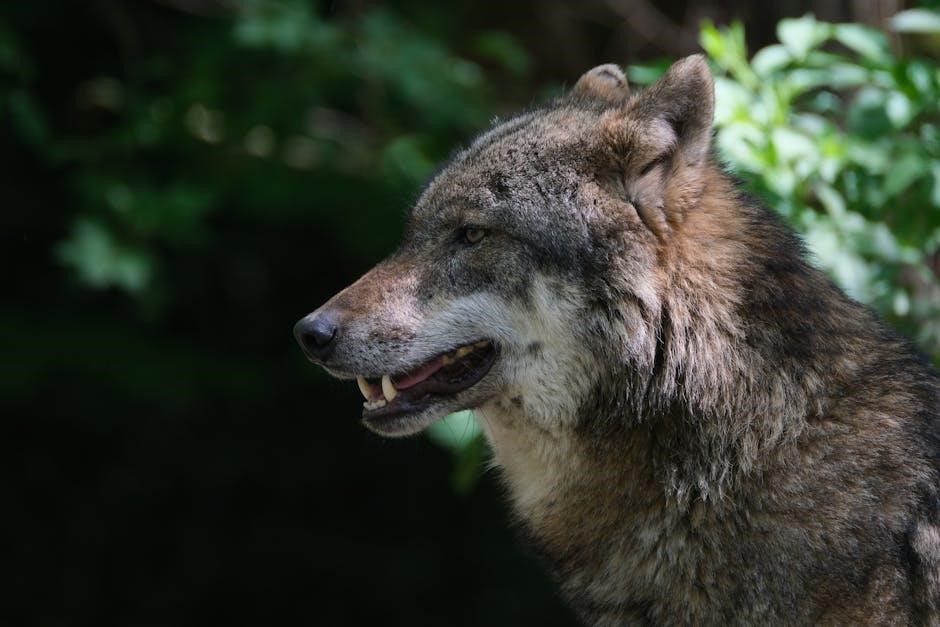
Guided Wolf Hunting Tours
Guided wolf hunting tours offer a structured experience, combining expert knowledge with ethical practices to ensure safety and success for participants.
5.1. Benefits of Guided Tours
Guided wolf hunting tours provide numerous benefits, including expert guidance, access to prime locations, and adherence to ethical practices. Experienced guides ensure safety, legal compliance, and a higher success rate. They offer insights into wolf behavior, habitat, and tracking techniques, enhancing the overall hunting experience. Additionally, guided tours promote responsible wildlife management and conservation efforts, fostering a deeper appreciation for nature and hunting ethics. Participants gain valuable knowledge and skills, making the tour both educational and rewarding.
5.2. Choosing a Reputable Guide or Outfitter
When selecting a guide or outfitter for wolf hunting, it’s crucial to verify their credentials and experience. Ensure they hold proper permits and adhere to local regulations. Check their success rates, client reviews, and ask for references. A reputable guide will emphasize ethical practices, safety, and wildlife conservation. They should also provide clear communication about the hunt’s logistics and expectations. Choosing a trustworthy outfitter enhances the safety and success of your wolf hunting experience while promoting responsible hunting practices.
5.3. Safety Measures and Precautions
Safety is paramount in guided wolf hunts. Hunters must follow strict guidelines, including proper firearm handling and wearing visible clothing to avoid accidents. Guides ensure participants are trained in emergency procedures and first aid. Pre-hunt briefings cover terrain risks and weather conditions. Adhering to local regulations and ethical practices minimizes risks to both humans and wolves. Carrying essential gear like GPS devices, communication tools, and emergency kits is mandatory. Respect for the environment and wildlife ensures a safe and responsible hunting experience for all involved.
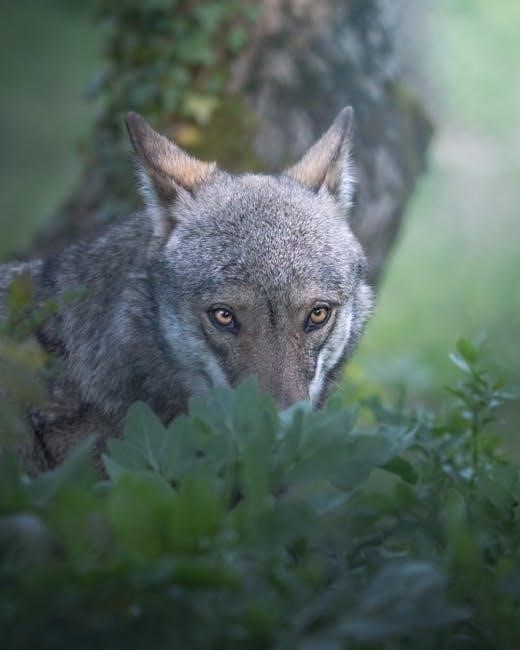
Wolf Hunting Techniques
Wolf hunting techniques require precision and patience, combining tracking skills with strategic use of bait and camouflage to ensure a successful and ethical hunt.
6.1. Tracking and Stalking Wolves
Tracking and stalking wolves is an art that requires immense skill and knowledge of wolf behavior. Guides often use experienced techniques to read tracks, understand pack dynamics, and predict movement patterns. This method ensures hunters can approach wolves undetected, relying on camouflage and stealth. Indigenous tribes, like the Ojibwe, have historically viewed wolves as teachers, emphasizing patience and respect in the hunt. By combining traditional wisdom with modern strategies, hunters can engage in ethical and successful wolf tracking, fostering a deeper connection with nature and wildlife.
6.2. Using Bait and Lures for Wolf Hunting
Using bait and lures is a strategic method in wolf hunting, often employing natural scents or calls to attract wolves. Guides may use wolf howls or urine-based lures to mimic territorial markers. Baiting sites, when permitted, must be clearly marked to avoid legal issues. This technique requires patience and precise placement, as wolves are cautious creatures. Ethical considerations arise, as baiting can alter wolf behavior, sparking debates among hunters and conservationists about its impact on ecosystems and wolf populations. Regulations vary by region, ensuring responsible use.
6.3. Hunting Strategies and Tactics
Hunting strategies for wolves often involve a combination of tracking, calling, and ambush techniques. Guides use their knowledge of wolf behavior and terrain to position hunters effectively. Stalking requires patience and stealth, as wolves have keen senses. Calling techniques, such as howling, can lure wolves within range. Ambush setups in strategic locations like game trails or ridges are common. Success depends on understanding wolf movement patterns and adapting to their intelligence. Ethical practices ensure a fair chase, respecting the animal’s instincts and the hunter’s responsibility.
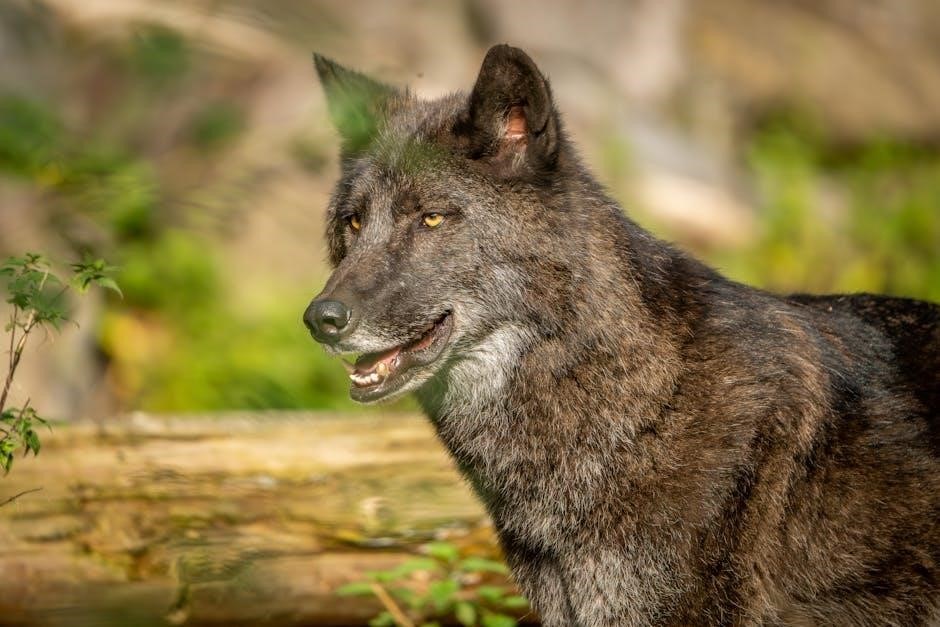
Cultural and Historical Perspectives
Cultural and historical perspectives on wolf hunts highlight indigenous reverence, folklore, and the symbolic significance of wolves in human societies across centuries.
7.1. Indigenous Tribes and Wolf Hunting
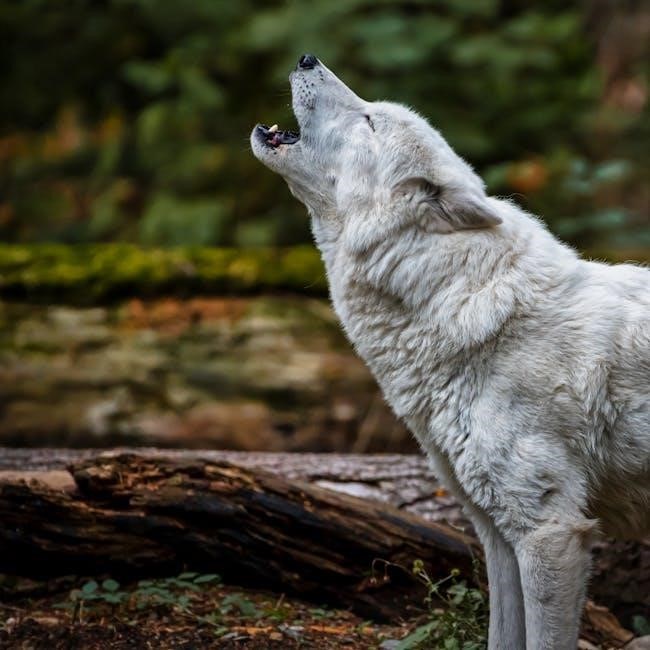
Indigenous tribes have long revered wolves, often viewing them as sacred teachers. The Ojibwe people, for instance, see wolves as symbols of family and resilience. In their traditions, wolves are honored for teaching humans how to thrive in harmony with nature. This deep respect is reflected in sustainable hunting practices, where wolves are hunted responsibly to maintain ecological balance. Such practices emphasize respect, gratitude, and the avoidance of waste, ensuring the preservation of both culture and environment. These traditions continue to inspire modern ethical hunting guidelines.
7.2. Historical Context of Wolf Hunts
Wolf hunts have deep historical roots, often tied to survival and cultural practices. In Japan, for example, wolves were hunted to extinction by 1905, primarily due to conflicts with agriculture. Early hunting methods were rudimentary, relying on tracking and primitive traps. These practices, though effective, were often brutal and lacked the ethical considerations of modern guided hunts. Historical records reveal that wolves were both revered and feared, reflecting their complex role in human society. This duality shaped hunting practices, influencing how wolves were viewed and hunted across centuries.
7.3. Wolves in Folklore and Mythology
Wolves hold significant roles in folklore and mythology, often symbolizing strength, cunning, and mystery. In many cultures, they are depicted as both noble and fearsome creatures. Indigenous tribes, such as the Ojibwe, view wolves as teachers, emphasizing their importance in balancing ecosystems. Mythologies worldwide feature wolves as central characters, from the Big Bad Wolf in fairy tales to the revered animals in ancient legends. Their presence in folklore underscores their impact on human imagination and cultural identity, blending admiration and caution in their portrayal. This duality enriches their symbolic meaning across societies.
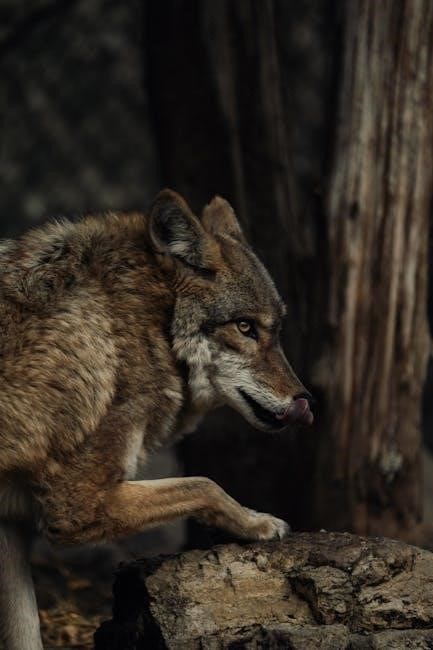
Environmental Impact and Conservation
Wolves play a crucial role in maintaining ecosystem balance as apex predators. Their presence regulates prey populations, benefiting vegetation and biodiversity. Conservation efforts focus on protecting wolves to ensure healthy, sustainable ecosystems.
8.1. Wolves’ Role in Ecosystems
Wolves are apex predators, playing a vital role in maintaining ecosystem balance. They regulate prey populations, preventing overgrazing and maintaining vegetation health, which supports biodiversity. By controlling herbivore numbers, wolves indirectly benefit other species, ensuring a balanced food web. Their presence also influences ecosystem processes, such as nutrient distribution through carcasses. Without wolves, ecosystems can experience cascading effects, like overpopulation of deer, leading to habitat degradation. Thus, wolves are keystone species, essential for preserving ecological integrity and promoting a healthy, thriving environment.
8.2. Conservation Efforts and Wolf Populations
Conservation efforts have significantly impacted wolf populations, with protections under the Endangered Species Act and reintroduction programs stabilizing numbers in some regions. Organizations and initiatives focus on habitat preservation and reducing human-wolf conflicts, fostering coexistence. While populations have recovered in areas like Yellowstone, challenges remain, such as habitat loss and poaching. Continued conservation is crucial to ensure sustainable wolf populations, balancing ecological needs with human activities to maintain a healthy and thriving wolf presence in the wild.
8.3. Debates on Hunting and Wolf Management
The role of hunting in wolf management sparks intense debates among conservationists, scientists, and hunters. Proponents argue that regulated hunting can maintain population balance and reduce conflicts with livestock. Opponents emphasize ethical concerns and potential impacts on social structures. International consensus principles suggest hunting should align with ecological and ethical standards, ensuring sustainability. Debates highlight the complexity of managing wolf populations, requiring a balanced approach that considers both human and environmental needs to preserve these apex predators effectively.
Mental toughness and physical fitness are crucial for guided wolf hunts. Hunters must build endurance, focus, and resilience to handle challenging terrains and unpredictable conditions effectively. Physical conditioning is essential for guided wolf hunts, as it demands endurance and strength. Hunters should engage in cardio exercises, strength training, and practice carrying gear over long distances. Building stamina ensures they can navigate challenging terrains and withstand harsh weather conditions. Proper physical preparation enhances safety and increases the likelihood of a successful hunt. Mental strategies, such as focus and resilience, also play a crucial role in maintaining performance during the hunt. A well-conditioned hunter is better equipped to handle the physical and mental challenges of wolf hunting. Mental strategies are crucial for guided wolf hunts, requiring focus, patience, and resilience. Hunters must stay calm under pressure and maintain concentration over long periods. Developing a positive mindset helps overcome challenges, while setting clear goals enhances determination. Practicing mindfulness and staying adaptable to changing conditions are key. Building mental endurance ensures hunters remain composed during intense moments, increasing their chances of success. A strong mental approach complements physical preparation, fostering a well-rounded and effective hunting experience. Ethical hunting practices are essential for responsible wolf hunting. Hunters must respect wildlife, adhere to regulations, and prioritize conservation. Understanding the role of hunting in population management ensures sustainable practices. Ethical considerations include minimizing animal suffering and avoiding wasteful practices. Hunters must also respect the environment and other wildlife. By embracing these principles, hunters contribute to the preservation of wolf populations and ecosystems. Ethical responsibility fosters a deeper connection to nature and promotes a positive image of hunting within communities. Responsible hunting ensures the long-term survival of wolves and their habitats. Guided wolf hunts blend tradition, conservation, and ethical practices, offering a unique experience while promoting wildlife management. Their future hinges on balancing hunting and preservation efforts responsibly. Guided wolf hunts offer a unique blend of adventure, conservation, and ethical practices. They provide hunters with expertise, safety, and compliance with regulations, fostering a deeper appreciation for wildlife. These hunts highlight the importance of responsible hunting and its role in ecosystem balance. By prioritizing ethical guidelines and conservation, guided tours ensure a sustainable future for wolf populations, benefiting both hunters and the environment. This approach promotes harmony between human activities and nature, ensuring that wolf hunting remains a respected tradition. The future of wolf hunting and conservation hinges on balancing ethical practices with ecological needs. As debates persist, international consensus principles emphasize responsible wildlife management. Conservation efforts must prioritize wolf population stability, while hunting regulations adapt to scientific research. Climate change and habitat loss pose growing threats, necessitating adaptive strategies. Collaborative efforts between hunters, conservationists, and policymakers will shape sustainable practices, ensuring wolves thrive while respecting human-wildlife coexistence. The integration of indigenous knowledge and modern science will be crucial in forging a balanced path forward for wolf management.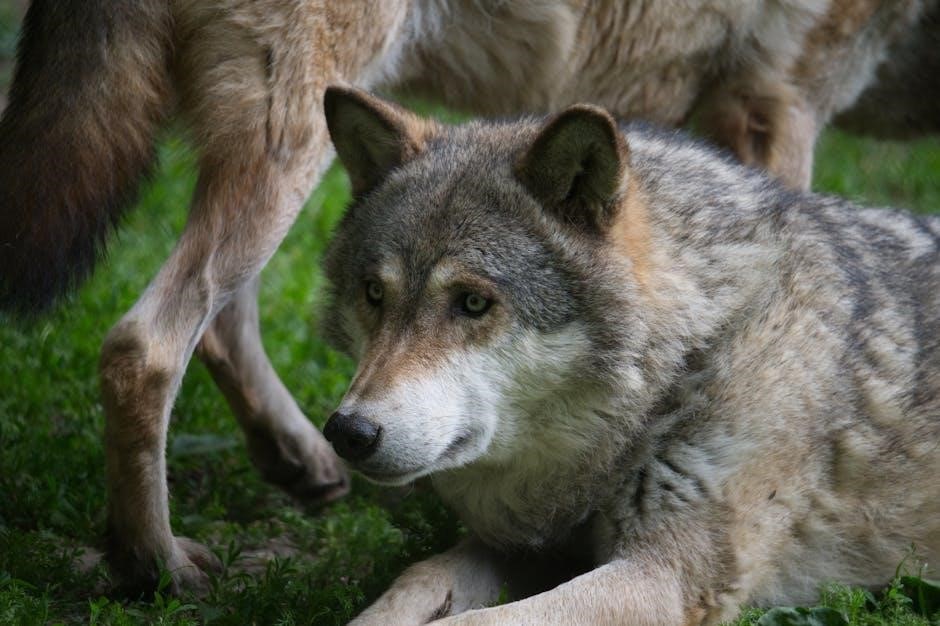
Mental and Physical Preparation
9.1; Physical Conditioning for Hunters
9.2. Mental Strategies for Successful Hunts
9.3. Understanding Hunter Ethics and Responsibility
10.1. Final Thoughts on Guided Wolf Hunts
10.2. Future of Wolf Hunting and Conservation